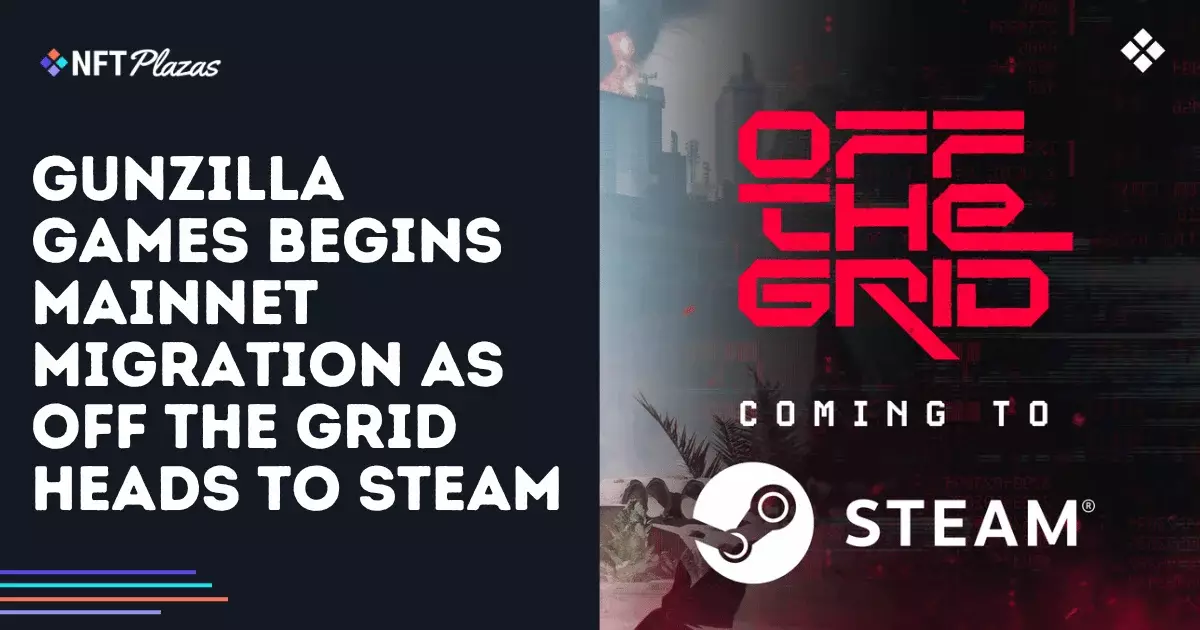The recent efforts by Gunzilla Games to migrate players onto their blockchain ecosystem, GUNZ, exemplify a trend that’s increasingly permeating the gaming industry—a move driven more by hype than genuine utility. While blockchain proponents tout decentralization and true ownership, the reality often reveals a superficial layer that distracts from what gaming should genuinely prioritize: immersive, accessible entertainment. Gunzilla’s ambitious push for an on-chain ecosystem reflects a careless pursuit of novelty, risking alienating core audiences who seek fun rather than financial speculation tethered to their gaming experiences.
The move to incorporate blockchain features—such as on-chain assets, validator NFTs, and a growing marketplace—looks impressive on paper. Yet, it raises critical concerns about scalability, security, and the long-term viability of integrating these systems into mainstream titles. The heavy emphasis on token volume, marketplace activity, and validator nodes reveals an obsession with blockchain metrics rather than player-centric innovation. This focus might satisfy investors and early adopters, but it risks turning games into mere conduits for speculative assets rather than genuine entertainment experiences.
Moreover, the strategic decision to delay full blockchain functionality on the upcoming Steam release underscores a fundamental conflict: platform policies and technical realities often clash with blockchain ambitions. Using testnet versions on Steam is a prudent compliance measure, yet it highlights the industry’s sidestep—developers leveraging blockchain features in ways that avoid immediate confrontation with platform restrictions, all while previewing the benefits to a select few. This half-measure risks creating a fragmented user experience and undermines the transparency that true decentralization promises.
Regulatory Overreach and the Illusion of Legitimacy
Gunzilla’s transparency efforts, such as monthly reporting and licensing pursuits, are presented as signs of a mature and responsible approach. Yet, these disclosures often mask deeper issues—particularly the uncharted regulatory landscape surrounding blockchain in gaming. The pursuit of a Virtual Asset Service Provider (VASP) license indicates a desire to legitimize their operations, but it also hints at underlying vulnerabilities: the industry remains at the mercy of evolving legal frameworks that could turn these assets into liabilities overnight.
Such regulatory ambitions, while necessary, are being driven by a desire to unlock broader access and revenue streams rather than a genuine concern for user protection or fair play. If anything, these maneuvers reflect a gamble—betting on regulatory acceptance to justify a speculative and untested model. This has dangerous implications: what happens if regulatory hurdles are not cleared, or if governments implement strict controls? Gunzilla’s proactive licensing and partnerships may offer short-term gains, but they may also trap the studio in legal grey areas, risking the entire ecosystem’s stability.
Furthermore, the reliance on high-volume marketplaces and on-chain assets may inadvertently invite scrutiny, casting shadows of suspicion over what should be straightforward entertainment rather than financial instruments. The industry’s enthusiastic embrace of Web3 features sometimes borders on overreach, turning what should be fun into a complex web of compliance, speculation, and regulatory risk.
Strategic Missteps and the Real Threat to Gaming Innovation
Ultimately, Gunzilla’s approach reveals a fundamental misunderstanding—or perhaps willful neglect—of what players truly want from their gaming experiences. The focus on blockchain infrastructure, tokenomics, and on-chain asset ownership, although innovative in theory, risks creating a disconnect with mainstream audiences. Hardcore gamers, in particular, value gameplay dynamics, storytelling, and skill-based competition over ownership of virtual assets that can be bought, sold, or lost due to technical failures or market volatility.
Their plans to migrate millions of wallets and introduce new arenas and weapons may seem like progress, but these additions are mere cosmetic upgrades if the core gameplay remains tethered to blockchain mechanics that clutter the user interface and dilute the experience. Meanwhile, the decision to operate the PC version on testnet due to Steam policy limitations underscores a broader issue: blockchain integration is, at best, a band-aid solution that distracts from genuine gameplay improvements.
The move to incorporate features like gyro aiming and weapon balance updates indicates a commitment to refinement—yet, these are standard industry practices. What’s missing is a clear focus on making the game more accessible and enjoyable first, with blockchain elements serving as secondary features rather than the primary lure. Gunzilla’s strategy risks turning off players whose loyalty is rooted in traditional game design, not speculative blockchain mechanics.
Why the Industry Should Be Wary of the Hype
In the grand scheme, Gunzilla’s bold, and some might say reckless, drive into blockchain gaming exposes a fundamental flaw in how industry pioneers view innovation. It’s tempting to believe that integrating blockchain into games offers a revolutionary path—more control for players, persistent assets, and new economic models. But what it often results in is a complex, fragile infrastructure that alienates casual players and introduces unnecessary regulatory and technical risks.
The hype surrounding blockchain gaming obscures the fact that many of these innovations are untested, costly, and potentially counterproductive. For every blockbuster that successfully marries blockchain with gaming, countless others will fall into obscurity or worse—disillusionment among players who realize their assets are not as valuable or permanent as promised.
In the end, Gunzilla’s current trajectory feels like a gamble—placing bets on a future where blockchain is normalized, regardless of whether the core gaming community is ready or willing. A centrist, pragmatic perspective suggests that gaming companies need to prioritize a return to core gameplay excellence before chasing after the next digital gold rush. Pioneering for the sake of pioneering, especially without a clear, sustainable pathway, risks turning what could be revolutionary into a fleeting sideshow—one that may ultimately undermine the credibility of the entire industry.

